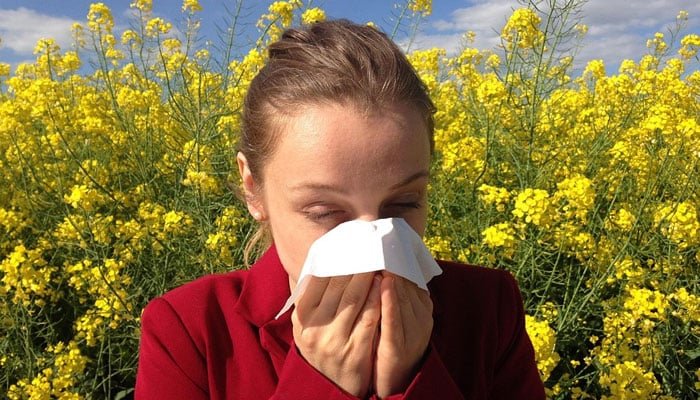Introduction to Climate Change and Allergies
Every spring, I brace myself for the familiar itch in my eyes and the relentless sneezing that signals allergy season. But over the past few years, it’s felt like my allergies are staging a full-on rebellion, lasting longer and hitting harder. I’m not alone—millions of Americans are noticing worse allergy symptoms, and climate change is a major culprit. Rising temperatures, shifting seasons, and increased carbon dioxide are supercharging pollen production, making seasonal allergies more intense. This article dives into how our warming planet is driving a surge in allergic diseases, backed by science, personal stories, and practical tips to help you breathe easier.
Understanding the Allergy-Climate Connection
Climate change isn’t just melting glaciers or fueling wildfires—it’s also making your hay fever worse. Warmer temperatures and higher CO2 levels are extending pollen seasons and boosting allergen production, leading to more severe allergic rhinitis and asthma. Studies show pollen seasons in the US are now 20 days longer than in 1990, with a 21% increase in pollen concentrations. This means more sneezing, wheezing, and misery for the 81 million Americans battling seasonal allergies.
What Are Seasonal Allergies?
Seasonal allergies, or allergic rhinitis, occur when your immune system overreacts to airborne allergens like pollen, triggering symptoms like sneezing, itchy eyes, and congestion. Common culprits include tree pollen in spring, grass pollen in summer, and ragweed in fall. With climate change, these allergens are becoming more potent and persistent, turning what was once a nuisance into a significant health challenge.
How Climate Change Worsens Allergens
Rising global temperatures, driven by greenhouse gas emissions, are altering plant behavior. Warmer springs cause plants to bloom earlier, while extended frost-free periods prolong pollen seasons. Higher CO2 levels act like plant fertilizer, boosting pollen output and allergenicity. For example, ragweed now produces more potent pollen, increasing the risk of asthma attacks and hospital visits.
Key Drivers of Rising Allergies
Longer Pollen Seasons
Picture this: you’re planning a picnic, but your nose is already staging a protest because pollen season started weeks earlier than expected. Research from the University of Utah shows that pollen seasons across North America now start 20 days earlier and last 10 days longer than in 1990. This extended exposure window means more days of discomfort for allergy sufferers.
Why Seasons Are Lengthening
Warmer winters and earlier springs, driven by climate change, are shifting plant phenology—the timing of biological events like flowering. Fewer frost days mean plants like ragweed and birch bloom sooner and longer. In northern regions like Minneapolis, ragweed season has extended by 18–24 days, amplifying allergy risks.
Impact on Health
Longer pollen seasons don’t just mean more sneezing—they increase the risk of severe health outcomes. A 2023 EPA study estimates that pollen-related asthma emergency room visits could rise by 14% by 2090, particularly affecting children and the elderly. This prolonged exposure also exacerbates conditions like allergic conjunctivitis, causing red, itchy eyes.
Increased Pollen Production
It’s not just the length of the season—plants are pumping out more pollen than ever. Higher atmospheric CO2 levels fuel plant growth, leading to a 21% increase in pollen concentrations since 1990. Ragweed, a notorious allergen, thrives in these conditions, producing pollen that’s more allergenic and harder for your immune system to ignore.
The CO2 Effect
Plants use CO2 for photosynthesis, and with levels now at their highest in centuries, they’re producing more pollen. A study found that ragweed exposed to elevated CO2 levels produced pollen with higher allergen content, making symptoms worse. This “pollen storm” is hitting urban areas hardest, where air pollution amplifies the problem.
Regional Variations
Pollen increases vary by region. Texas and the Midwest have seen the largest spikes, with tree pollen leading the charge. In contrast, southern states like California are grappling with new allergen sources due to increased rainfall and plant growth. No region is immune, as climate change reshapes pollen landscapes nationwide.
Thunderstorm Asthma and Extreme Weather
Ever heard of thunderstorm asthma? It’s a terrifying phenomenon where storms whip up pollen into tiny, lung-penetrating fragments, triggering severe asthma attacks. Climate change is making these events more frequent, as seen in Melbourne’s 2016 incident, which sent thousands to hospitals. Rising temperatures and extreme weather are creating perfect conditions for these allergic emergencies.
How Thunderstorms Worsen Allergies
During storms, strong winds and humidity cause pollen grains to burst into smaller particles that easily enter the lungs. This can lead to sudden, severe respiratory distress, especially for those with asthma. Climate-driven increases in storm frequency are raising the risk of such events across the US.
Vulnerable Populations
Children, the elderly, and low-income communities are most at risk. A 2023 EPA report found that pollen exposure disproportionately impacts Hispanic, Asian, and Black children, who face higher rates of asthma-related emergencies. Limited access to healthcare in these communities compounds the problem, making climate action urgent.
Health Impacts of Worsening Allergies
Rising Rates of Allergic Diseases
Allergies aren’t just a springtime annoyance—they’re a growing public health crisis. Over the past 60 years, allergic disorders have surged, with projections estimating 4 billion cases globally by the 2050s. In the US, 1 in 4 adults and 1 in 5 children suffer from seasonal allergies, costing over $3 billion annually in medical expenses.
Allergic Rhinitis and Asthma
Allergic rhinitis, or hay fever, affects up to 60 million Americans yearly, causing symptoms like sneezing, congestion, and fatigue. For those with asthma, pollen exposure can trigger attacks, leading to increased hospital admissions. Climate change is intensifying these conditions, particularly for vulnerable groups like children.
Secondary Health Effects
Prolonged allergies can lead to complications like chronic sinusitis, eczema, and even viral infections, as mucus from allergies creates a breeding ground for bacteria. These secondary effects reduce quality of life, impacting sleep, work, and school performance, especially for kids.
Economic and Social Costs
The ripple effects of allergies go beyond health. Allergic diseases contribute to socioeconomic inequality, with low-income communities facing higher burdens due to limited healthcare access. The $3 billion in annual pollen-related medical costs is just the start—lost productivity and missed school days add to the toll.
Disproportionate Impacts
Minority groups, particularly Black and Puerto Rican children, are two to three times more likely to have asthma, making them more vulnerable to pollen-driven attacks. Climate change exacerbates these disparities, highlighting the need for targeted public health interventions.
The Burden on Healthcare Systems
Hospitals are seeing a surge in allergy-related visits, with pollen linked to 35,000–60,000 asthma-related emergency room trips annually. As pollen seasons intensify, healthcare systems face increasing pressure, especially in under-resourced areas.
Personal Story: Navigating Allergies in a Changing Climate
A few years ago, I moved to Austin, Texas, expecting sunny days and mild springs. Instead, I was hit with allergies so bad I thought I’d caught a never-ending cold. My doctor explained that the region’s extended pollen season, fueled by warmer winters, was to blame. I started checking pollen forecasts like a weather report, swapped my bedding for hypoallergenic options, and invested in an air purifier. It wasn’t just me—friends and coworkers were swapping stories of new-onset allergies, a reminder that climate change is hitting us where we live. This personal wake-up call inspired me to dig deeper into how our planet’s changes are reshaping our health.
Comparing Allergy Triggers: Climate vs. Other Factors
| Trigger | Climate-Related Impact | Other Influences | Severity |
|---|---|---|---|
| Pollen | Longer seasons, higher concentrations | Urbanization, plant choices | High |
| Mold | Increased due to extreme rainfall | Poor indoor ventilation | Moderate |
| Air Pollution | Worsened by CO2 and ozone | Industrial emissions, traffic | High |
| Thunderstorm Asthma | More frequent with extreme weather | Rare without storms | Severe |
Climate vs. Non-Climate Drivers
- Climate Drivers: Rising temperatures and CO2 are the primary culprits, extending pollen seasons and boosting allergenicity. These are widespread and intensifying.
- Non-Climate Drivers: Urbanization and “botanical sexism” (planting male trees that produce more pollen) contribute but are less dominant. These can be mitigated locally.
Pros and Cons of Climate-Driven Allergy Changes
| Aspect | Pros | Cons |
|---|---|---|
| Awareness | Increased focus on allergy management | Higher healthcare costs |
| Technology | Better pollen forecasting tools | Limited access in low-income areas |
| Public Health | Push for climate action | Rising disease burden |
Practical Solutions for Managing Allergies
Monitor Pollen Levels
Checking local pollen forecasts can help you plan outdoor activities. Websites like pollen.com provide real-time data, while apps like AirRater offer personalized allergen alerts. Staying proactive reduces exposure and keeps symptoms in check.
Best Tools for Pollen Tracking
- Pollen.com: Free, real-time pollen forecasts for your area.
- AirRater App: Tracks pollen and air pollution, offering personalized health tips.
- MASK-air App: Combines pollen data with symptom tracking for tailored advice.
Improve Indoor Air Quality
Your home can be a sanctuary from allergens with the right tools. High-efficiency particulate air (HEPA) filters trap pollen and dust, while keeping windows closed on high-pollen days prevents allergens from sneaking in. Regular cleaning also helps.
Top Air Purifiers for Allergies
- Dyson Pure Cool: Combines air purification with cooling, ideal for small spaces.
- Levoit Core 400S: Affordable and effective for medium-sized rooms.
- Where to Buy: Amazon or Best Buy for competitive pricing and reviews.
Medical and Lifestyle Adjustments
Consulting an allergist can make a world of difference. Over-the-counter antihistamines like Zyrtec or Claritin can manage symptoms, while immunotherapy (allergy shots) offers long-term relief. Lifestyle changes, like showering after outdoor time, also reduce allergen exposure.
Tips for Reducing Exposure
- Stay Indoors: Avoid outdoor activities during peak pollen hours (morning).
- Wash Up: Shower and change clothes after being outside.
- Use Masks: Wear a mask on high-pollen days to limit inhalation.
People Also Ask (PAA) Section
Why are allergies getting worse with climate change?
Climate change extends pollen seasons by 20 days and increases pollen concentrations by 21%, driven by warmer temperatures and higher CO2 levels. This leads to more intense and prolonged allergy symptoms. Reducing fossil fuel use can help mitigate these effects.
How does air pollution worsen allergies?
Air pollutants like ozone and particulate matter make pollen more allergenic by altering its structure. This amplifies immune responses, worsening symptoms like sneezing and asthma attacks. Urban areas with high pollution see the most significant impacts.
Can climate change cause new allergies?
Yes, warmer temperatures and new plant distributions expose people to unfamiliar allergens, triggering new sensitivities. Adults in their 30s and 40s are increasingly reporting first-time allergies due to these changes.
What is thunderstorm asthma?
Thunderstorm asthma occurs when storms break pollen into tiny fragments that penetrate the lungs, causing severe asthma attacks. Climate change increases the frequency of these events, posing risks for asthmatics.
FAQ Section
How does climate change affect pollen production?
Higher CO2 levels and warmer temperatures cause plants to produce more pollen and release it earlier. This leads to longer, more intense pollen seasons, worsening allergy symptoms for millions.
Are children more affected by climate-driven allergies?
Yes, children are particularly vulnerable, with 19% suffering from seasonal allergies. Pollen exposure can trigger asthma attacks, impacting school performance and quality of life.
What can I do to manage worsening allergies?
Check pollen forecasts, use HEPA air purifiers, and consult an allergist for medications or immunotherapy. Lifestyle changes like washing clothes after outdoor time also help reduce exposure.
Can reducing carbon emissions help with allergies?
Reducing fossil fuel use can slow climate change, shortening pollen seasons and lowering CO2-driven pollen production. This could ease allergy symptoms over time.
Where can I find reliable pollen forecasts?
Websites like pollen.com and apps like AirRater or MASK-air provide accurate, real-time pollen data. These tools help you plan activities to minimize allergen exposure.
Conclusion: Breathing Easier in a Warming World
My journey with allergies has taught me that while climate change is making things tougher, we’re not powerless. From checking pollen forecasts to investing in an air purifier, small steps can make a big difference. But the real solution lies in tackling climate change itself—cutting carbon emissions and supporting green policies can help curb the pollen storm. As we face longer, more intense allergy seasons, let’s take control of our health and advocate for a healthier planet. Visit pollen.com for daily forecasts, explore AirRater for personalized tips, and join the fight for a cleaner future. Your nose—and lungs—will thank you.





